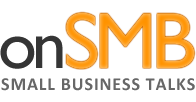Few things can put a bigger drain on your productivity than arriving at the office only to find your calendar packed solid with meetings. Trying to stay productive when not provided much of an opportunity to actually get any work done can easily leave you feeling frustrated and annoyed. Carrying these kinds of attitudes from meeting to meeting only helps to ensure you get little out of what has already become a drain on your time.
Unfortunately, it has become clear the U.S. workforce has become addicted to meetings. According to a study conducted by the Centre for Economics and Business Research, the typical office worker spends an average of four hours a week in meetings. Unsurprisingly, surveys have found that most workers view meetings as a less productive use of their time. In fact, a recent Salary.com survey found that 47 percent of workers rank meetings as the leading waste of their time while at work.
While they have developed a bad reputation, not all meetings rank as an unnecessary waste of time and productivity. However, even the most important meetings can quickly become unproductive if allowed to run too long or without a clear purpose. Fortunately, by following these tips, you can learn how to transform meetings and increase productivity.
Stay Aware of the Time
When scheduling a meeting, consider how much time it will actually take to complete your agenda. Blocking off an hour in order to discuss one or two agenda items that you can adequately cover in half the time may cause you and other participants at the meeting to drag out conversations and talking points to fill the allotted 60 minutes.
Instead of overbooking, try reducing the length of your meetings to 30 minutes or less. Make it a point to stay on schedule and limit conversation to the topics at hand. Always begin and end your meetings on time, regardless of whether you’ve completed your agenda. Shorter meetings help to add urgency, and you may find yourself surprised at how much you can accomplish in less time.
Limit Your Invite List
The large your invite list becomes to any one meetings, the more you diminish productivity. If you find yourself inviting over 10 people to a meeting, it could be a sign of laziness. View your meetings like a VIP event, and limit invitations to only those individuals whose input is vital to the topic at hand. As a general rule, strive to limit meetings to five people or less.
Create and Stick to Your Agenda
No one has enough time on their hands to meet just for the sake of meeting. When it comes to sharing information or making important decisions, calling a meeting isn’t always the most effective strategy. You can share information much more effectively by sending out an email that covers the most important topics or by making a few quick phone calls.
Unless a brainstorming session, a meeting should only be called to convey and support a previously made decision. Lay out in advance the topics you plan on covering and provide your agenda to those joining the meeting well in advance of the start time. This will provide those joining the meetings the time to prepare any questions or comments regarding the topics covered by your agenda. To keep your meeting running smoothly, limit conversation within the meeting to only those topics covered in the agenda.
Define the Type of Meeting in Advance
There are two basic types of meetings: business meetings and work sessions. Letting those invited to your meeting know in advance what type there are attending will enable them to come better prepared. Work sessions often require more participation, while business meetings generally require more absorption of information. It may seem like a small difference, but providing your attendees the opportunity to arrive with the right mindset can make a big difference in the productivity of your meeting.
Shed Bad Habits
Bad habits can quickly interfere with the running a quick and effective meeting. Breaking bad habits like straying off topic or rambling during long-winded introductions can greatly improve the flow and productivity of your meeting. When utilizing any conference room equipment, such as display screens or multimedia projectors, make sure you have everything setup and running correctly prior to your meeting’s start time.
The traditional business meeting drains productivity from the workforce. Do your part to transform meetings by keeping them concise, timely, and called only when necessary.
About the Author: John Nickelbottom is a freelance writer.


